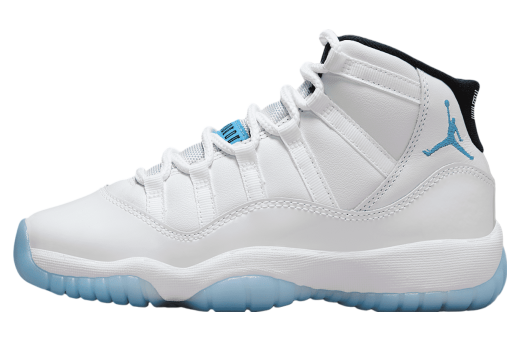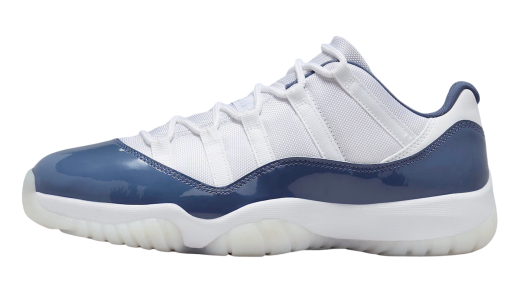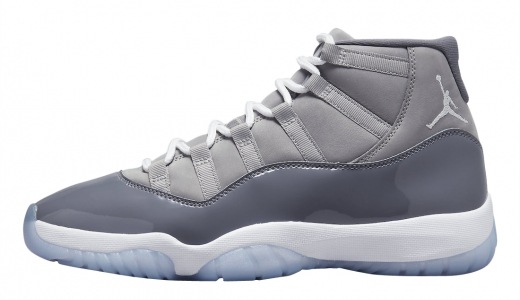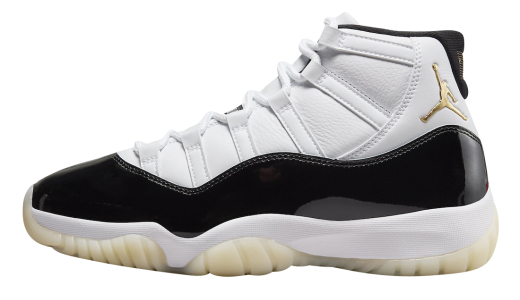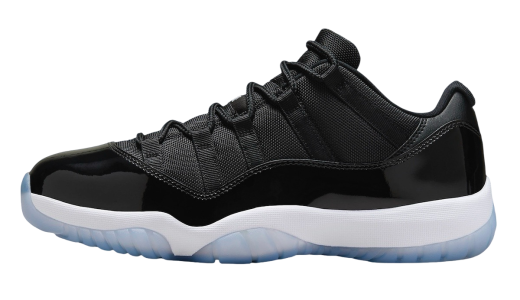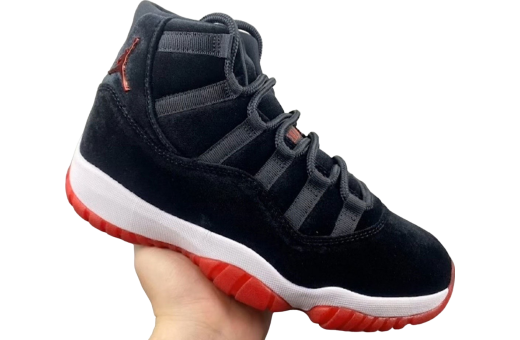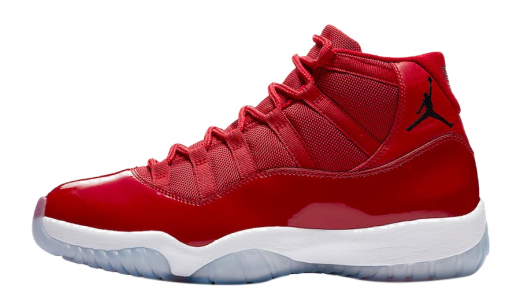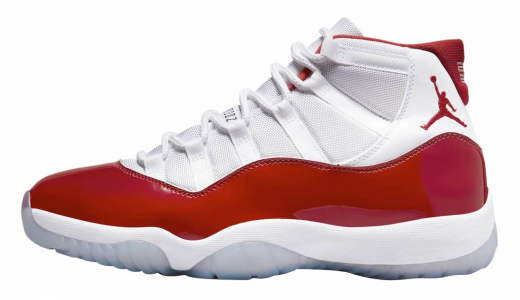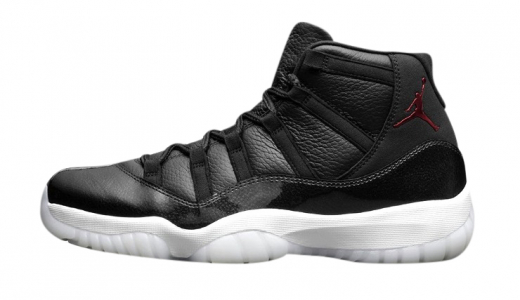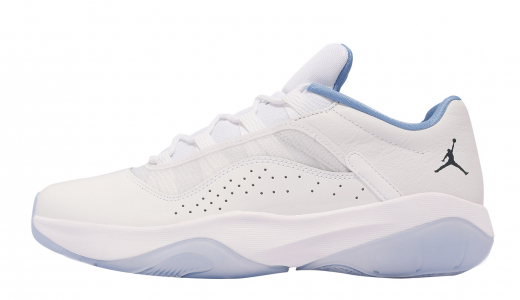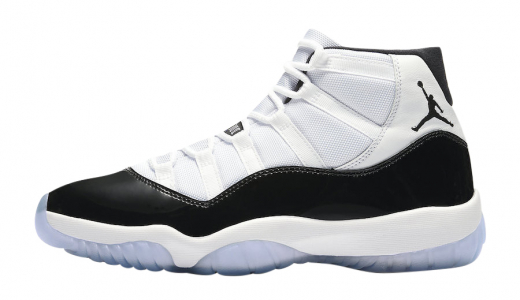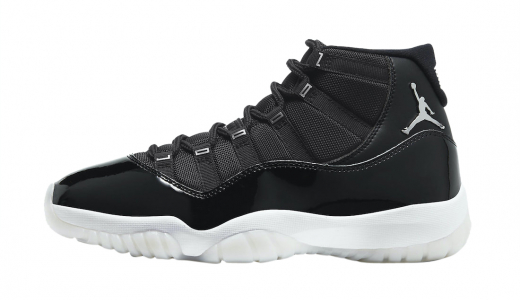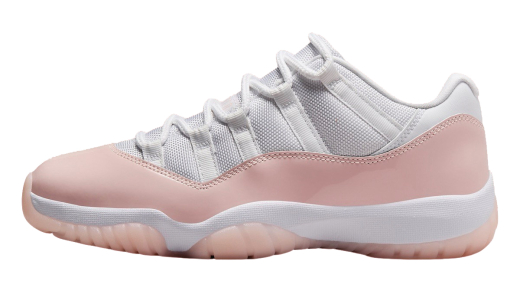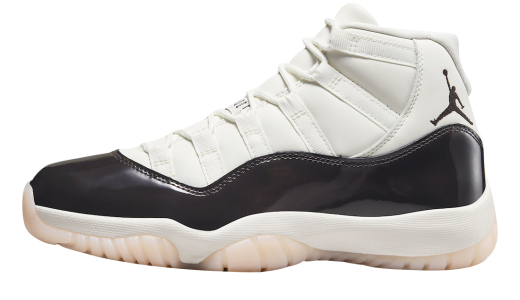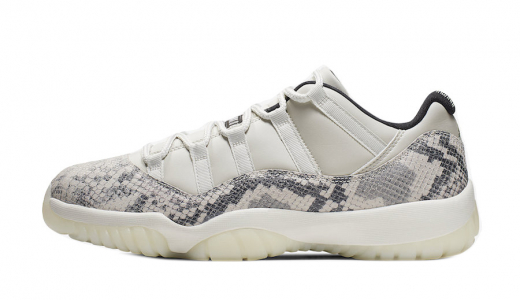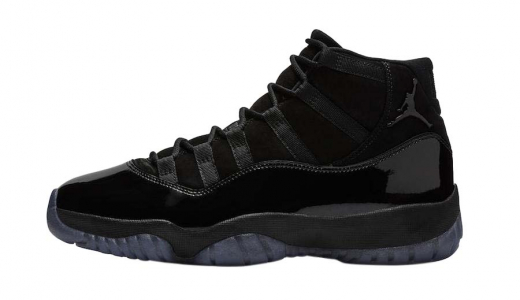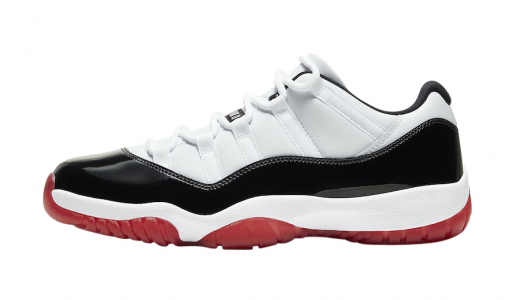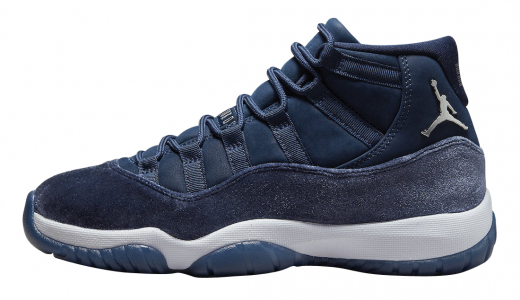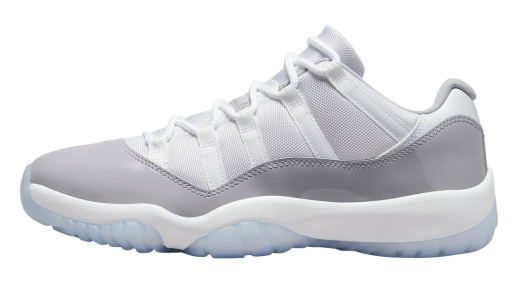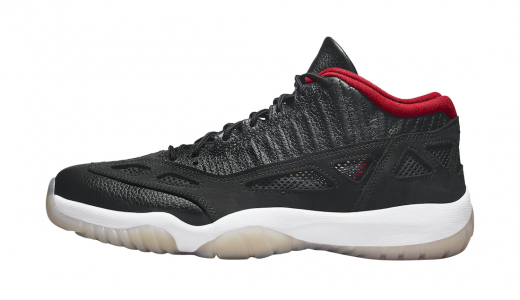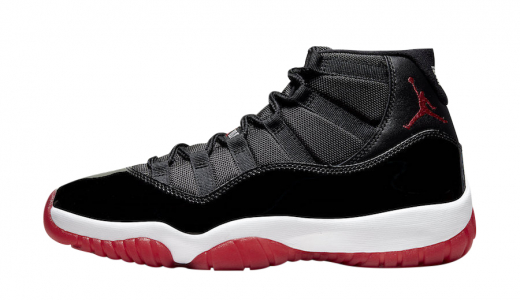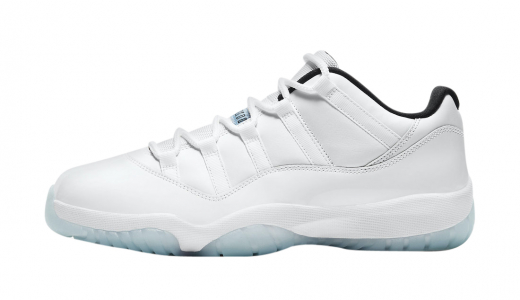Air Jordan 11
The Air Jordan 11 stands as one of the most iconic and sought-after sneakers in the Jordan Brand lineup. Originally released in 1995-1996, it was designed by Tinker Hatfield and famously worn by Michael Jordan during his comeback season after briefly retiring from basketball. Its design was revolutionary for its time, featuring a patent leather mudguard that added a luxurious touch to its sleek silhouette. The shoe also introduced full-length Air-Sole cushioning for exceptional comfort and responsiveness on the court.
Beyond its performance attributes, the Air Jordan 11's influence extends deeply into popular culture, becoming a symbol of style and status. Its design elements, including the carbon fiber plate for stability and the translucent outsole, have made it a favorite among sneaker collectors and enthusiasts alike. Over the years, the Air Jordan 11 has been re-released in various colorways, each adding to its legacy and ensuring its continued relevance in the world of sneakers and streetwear fashion.
History of Air Jordan 11
The Air Jordan 11 is more than just a basketball sneaker; it is a cultural phenomenon that transcends fashion, sports, and lifestyle. Released in the mid-1990s, the Air Jordan 11 quickly became one of the most iconic sneakers in the history of athletic footwear. To understand its significance and legacy, we must trace its origins, design process, cultural impact, and continuing relevance.
Origins and Design Process
The Air Jordan line was already a major success by the time the Jordan 11 was being developed. Michael Jordan, the man behind the brand, had solidified his status as one of the greatest basketball players of all time. However, following the 1992-1993 season, Jordan retired unexpectedly, shocking the world. He pursued a career in baseball but returned to the NBA in March 1995. It was around this time that the Air Jordan 11 made its debut.
The mastermind behind the Air Jordan 11 was Tinker Hatfield, a legendary designer at Nike. Hatfield had already designed several iconic Air Jordan models, but the 11 promised to be something entirely different. He aimed to create a shoe that not only performed exceptionally well on the court but also looked elegant enough to be worn off it. His vision for the Air Jordan 11 was ambitious, incorporating a patent leather upper for the first time in a basketball shoe. The patent leather added a premium, glossy look while also preventing the shoe from stretching and losing shape, thus providing better support.
Hatfield also integrated ballistic mesh, a durable and lightweight material, for the upper, making the shoe both robust and breathable. The midsole featured full-length Air cushioning for extra comfort and responsiveness. Adding to the innovative design was the translucent rubber outsole, which offered excellent traction and added an aesthetic appeal. The carbon fiber spring plate was another revolutionary feature, enhancing the shoe's structural integrity and providing players with added propulsion.
The Debut
The Air Jordan 11 officially hit the shelves in 1995, but Michael Jordan wore it for the first time during the 1995 NBA Playoffs. The sight of Jordan lacing up in a never-seen-before sleek, shiny sneaker created a buzz that went beyond the basketball community. Jordan’s performance in the playoffs, although the Bulls did not win the championship that year, added significant hype and anticipation for the official release.
Then came the 1995-96 NBA season, one of the most memorable in basketball history. Jordan led the Chicago Bulls to an unprecedented 72-10 regular-season record, a feat that stood as the best in NBA history until the 2015-16 Golden State Warriors surpassed it. He also captured the regular season MVP award, the All-Star Game MVP, and the NBA Finals MVP, where the Bulls defeated the Seattle Supersonics to win their fourth championship. Throughout this historic season, Jordan predominantly wore the Air Jordan 11, making it inseparable from the memories of his and the Bulls’ greatness.
Cultural Impact
The Air Jordan 11 didn’t just dominate the basketball courts; it penetrated popular culture in ways no other sneaker had done before. One of the notable highlights was its appearance in the 1996 movie "Space Jam," where Michael Jordan wore a black and white variant of the shoe, now affectionately known as the "Space Jam" colorway. The movie was a commercial success and introduced the Air Jordan 11 to a broader audience, including those who may not have been avid basketball fans.
The allure of the Jordan 11 extended into the music industry as well. Artists across genres, especially in hip-hop, embraced the shoe, incorporating it into their fashion statements and lyrics. Iconic musicians like Jay-Z, Nas, and Fat Joe, among others, frequently highlighted the Jordan 11, making it a fixture in hip-hop culture.
Moreover, the sneaker achieved a level of versatility rarely seen in athletic footwear. It was not unusual to see Air Jordan 11s paired with everything from suits to streetwear, further cementing its status as a fashion icon.
Key Colorways
Several colorways of the Air Jordan 11 have become legendary in their own right. Here are some of the most notable:
1. **Concord**: The original colorway that Michael Jordan wore during the 1995 NBA Playoffs. The black patent leather contrasted sharply with the white ballistic mesh, making it an instant classic. 2. **Bred**: Short for "black and red," this colorway is synonymous with the Chicago Bulls' colors. Jordan wore these during the 1996 NBA Playoffs and Finals, making them an unforgettable part of his championship run.
3. **Space Jam**: Released to coincide with the movie's premiere, this colorway features a sleek black upper with a translucent outsole and blue accents. It has seen multiple re-releases due to its immense popularity.
4. **Columbia**: Featuring a white upper with Columbia blue accents and outsole, this colorway was prominently worn during the 1996 NBA All-Star Game.
5. **Cool Grey**: Released in 2001, this non-original colorway became one of the most sought-after versions, proving that the Air Jordan 11 had staying power beyond its initial releases.
Legacy and Continuing Relevance
The Air Jordan 11’s initial success in the 1990s set the stage for an enduring legacy. It continues to be one of the most popular sneakers in the Air Jordan line and is frequently re-released, often selling out within minutes. Each re-release rekindles the excitement and draws both new and long-time fans.
The appeal of the Air Jordan 11 lies not only in its aesthetic beauty and innovative design but also in the emotional connections tied to Michael Jordan’s golden era. It's impossible to separate the shoe from the memories of Jordan's dominance on the court. Each re-release or new colorway serves as a testament to its timelessness.
Technical Innovations
While the original design was groundbreaking, the Air Jordan 11 has seen various updates that incorporate the latest in Nike technology without losing its essence. For example, some models feature updated cushioning systems and more durable materials, reflecting advancements in sneaker technology over the years. However, these updates are subtle and designed to enhance performance and comfort without altering the iconic look.
The Resale Market
Another testament to the Air Jordan 11’s status is its significant presence in the resale market. Sneakers, especially limited edition or high-demand models, often command exorbitant prices above their original retail value. The Air Jordan 11 consistently features in this market, emphasizing its rarity and the high demand that persists over decades.
Influence on Other Sneakers
The Air Jordan 11’s success has influenced numerous other sneaker designs, both within and outside the Nike brand. Its blend of athletic performance and high-fashion sensibility set a template for future Air Jordans and other basketball sneakers to follow. Sneaker designers have often revisited the elements that made the Air Jordan 11 revolutionary: the use of unconventional materials, the mix of form and function, and the cultural storytelling embedded within the shoe.
Community and Collaborations
The Air Jordan 11 has also been at the center of numerous collaborations, further extending its reach and appeal. For instance, Jordan Brand has teamed up with designers, artists, and other brands to create special editions of the Jordan 11 that offer fresh takes while preserving the iconic elements that define the shoe.
Conclusion
The Air Jordan 11 is an extraordinary chapter in the story of sneaker culture, serving as a bridge between the basketball courts and the greater world of fashion and lifestyle. Its pioneering design, marked by the innovative use of materials and groundbreaking aesthetics, set a new standard in sneaker production. The shoe’s cultural impact, bolstered by its association with Michael Jordan's legendary career and a strong presence in media, solidified its iconic status.
Decades after its initial release, the Air Jordan 11 remains a beloved staple, continuously capturing the imagination of sneaker enthusiasts, athletes, and cultural icons alike. Each re-release, whether a classic colorway or a new twist, reaffirms the timeless appeal and enduring legacy of the Air Jordan 11. It's not merely a sneaker; it's a symbol of excellence, style, and the transcendent power of sports and culture.

